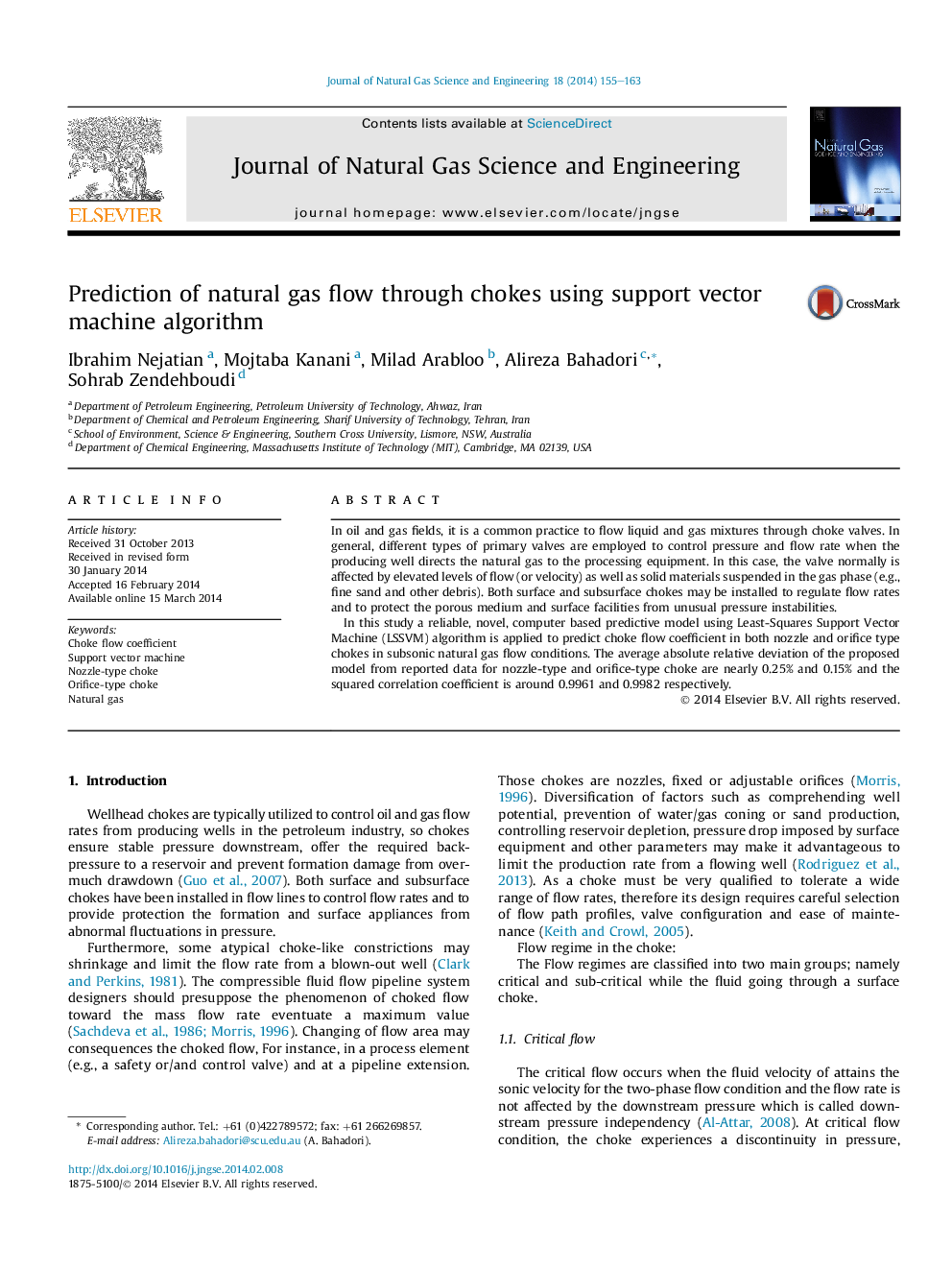| Article ID | Journal | Published Year | Pages | File Type |
|---|---|---|---|---|
| 1757925 | Journal of Natural Gas Science and Engineering | 2014 | 9 Pages |
•An improved choke flow coefficient predictive model for natural gas is developed.•Least-Square Support Vector Machine (LSSVM) is utilized for this purpose.•Developed models are more accurate than previous correlations.
In oil and gas fields, it is a common practice to flow liquid and gas mixtures through choke valves. In general, different types of primary valves are employed to control pressure and flow rate when the producing well directs the natural gas to the processing equipment. In this case, the valve normally is affected by elevated levels of flow (or velocity) as well as solid materials suspended in the gas phase (e.g., fine sand and other debris). Both surface and subsurface chokes may be installed to regulate flow rates and to protect the porous medium and surface facilities from unusual pressure instabilities.In this study a reliable, novel, computer based predictive model using Least-Squares Support Vector Machine (LSSVM) algorithm is applied to predict choke flow coefficient in both nozzle and orifice type chokes in subsonic natural gas flow conditions. The average absolute relative deviation of the proposed model from reported data for nozzle-type and orifice-type choke are nearly 0.25% and 0.15% and the squared correlation coefficient is around 0.9961 and 0.9982 respectively.
